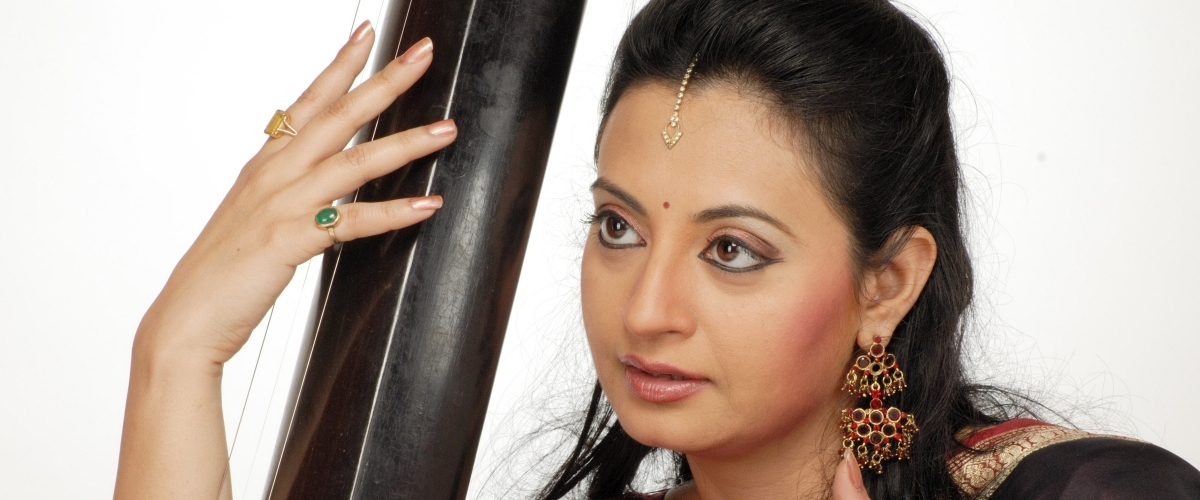

The Gwalior khayal star discusses religious tolerance, changing teaching styles, and her recent book on the history of her family's gharana.
—Part of Living Traditions: 21 articles for 21st-century Indian classical music
Gwalior has long been famed for its sublime singers. Once regarded as India’s cultural capital, the Northern region has produced many great vocalists over the centuries, including some of the Hindustani tradition’s most colourful innovators. Today’s classical music is unthinkable without the contributions of past Gwalior masters.
Predictably, the area’s early musical history stretches into myth. Legend has it that local court musicians of bygone times wielded supernatural powers - it is said that Mian Tansen could summon fire with Raag Deepak and rain with Raag Malhar, and that his rival Baiju Bawra (‘Crazy Bawra’) could hypnotise deer with Raag Mrigranjini and inspire flowers to blossom with Raag Bahar.
Whatever the exact history, there is no doubt that Gwalior has long been a place of cultural pilgrimage. Classical music has flourished there since the time of the Tomars, musically inclined warrior-kings who ruled the region in the 15th and early 16th centuries. Raja Man Singh Tomar was a dedicated musician throughout his 30-year reign, learning dhrupad in depth and opening a music school at Gwalior Fort.
The area has retained a distinctive musical identity while also absorbing ideas from successive waves of conquest, including the Hindu Scindias, Islamic Mughals, and British Empire. For centuries musicians would travel there to fine-tune their craft, and is said that even the local rickshaw drivers would sit together discussing ragas. Many of this generation’s leading young singers hail from the Gwalior gharana.
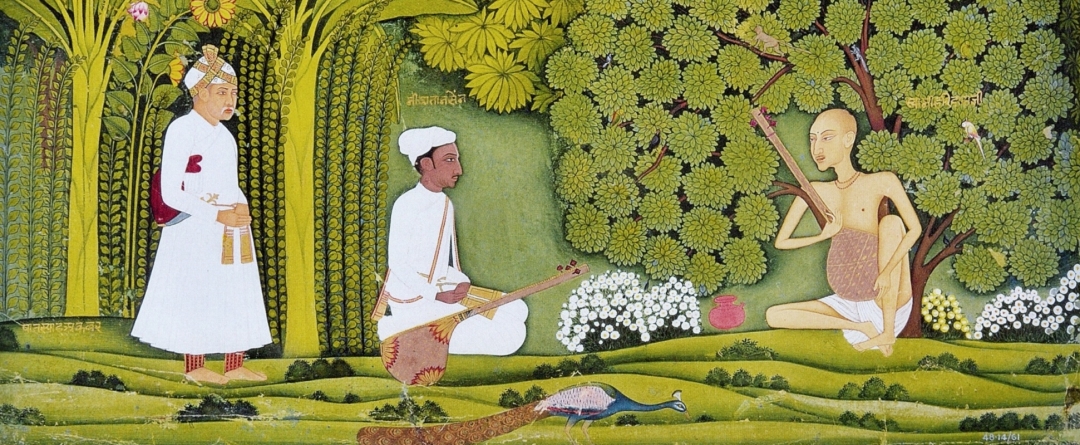
Emperor Akbar, Mian Tansen, and Swami Haridas (painting from Rajasthan, c.1750)
Meeta Pandit is one of Gwalior’s leading classical vocalists. She is also a scholar, and last year released a book on the history of her tradition. It traces how Gwalior musicians - including many of her own ancestors - helped shape the now-dominant khayal style, adapting the slow, austere sounds of ancient dhrupad into a faster, more flamboyant music with broader appeal. Khayal translates from the original Persian as ‘imagination’, reflective of the style’s high improvisatory freedom.
As recounted in the book, Gwalior’s early khayal masters guarded their art tightly, performing only to the royal court and practicing in the palace basement to prevent their compositions being overheard. Knowledge was a closed shop, passed down through tight-knit musical families who sought to protect their secrets at all costs. It seemed unthinkable that the Muslim Ustads would spend valuable time teaching Hindu outsiders.
But this custom was broken in the late 19th century, when Meeta’s great-grandfather Pandit Shankar Rao Pandit (yes, technically a double Pandit) convinced the leading Ustads of the era to accept him and his three brothers as disciples. For Ustads Haddu, Hassu, and Natthu Khan (also a set of brothers), the Pandit quartet’s talent, dedication, and persistence overrode their status as Hindu Brahmins.
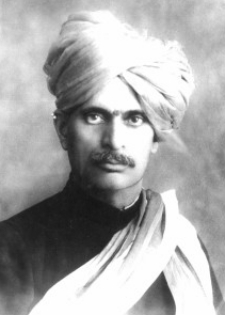
Pandit Krishnarao Shankar Pandit
They would repay their gurus’ initial faith many times over, developing the music in their own lifetimes and expertly training their descendents to carry it forward (see the family tree here). Shankar’s son Pandit Krishnarao Shankar Pandit became a veritable khayal legend, performing across India throughout the 20th century. Far from hiding his music in dark basements, he practiced in Gwalior’s forests and took on hundreds of students in a long lifetime that spanned the pre-electrical era to the advent of the internet.
He taught his own son, Pandit Laxman Krishnarao Pandit, who also became a highly esteemed vocalist. Meeta, Laxman’s daughter, received early training from both these masters, and today takes Gwalior khayal to audiences around the world. Her style embodies the gharana’s core elements, with a love for lyrical meaning and penchant for presenting common ragas in a ‘straightforward’, comparatively unadorned manner. Her technical mastery can take the breath away, but she usually eschews the sort of audience-pleasing acrobatics favoured by many of her contemporaries.
I spoke with Meeta on Skype in late 2018, occasionally straining to hear each other over an intermittent backdrop of local Diwali celebrations. Like most of the artists I’ve interviewed, her conversation can be described in similar terms to her music - clear, unhurried, well-informed, and eloquent rather than verbose. She told me the story behind her book as well as recounting some of the tales found in it...
Your book - Pandits of Gwalior - covers how your gharana helped to shape the transition from dhrupad to khayal. Many of the central characters hail from your own family. What will readers particularly enjoy about it?
There is of course the actual historical story - covering why the music changed, and how it became the reigning queen of North Indian classical. But there are also many tales from the family archives.
I didn’t just want to describe what happened - I wanted to show how these old masters would have seen the world. So, dispersed throughout the book are myths, legends, and rare anecdotes. We must consider these things too if we are to understand how they saw their music.
What led you to write it when you did?
To speak in general terms - today’s whole social world is changing very fast, and so it’s all the more important to document things well. This generation should know of the past.
But the book has its own origin story. It is based on the unfinished work of my brother Tushar, a talented singer who was tragically killed in a road accident in 1994. It took me a long time to be able to go back to his research - I originally turned it into the basis for my PhD, but revisiting it for the book was hard. It has taken me all these years to really put my mind to it again.
So writing it took several years. It was a difficult task - writing doesn’t come naturally to me like singing. And communicating about your own family is always hard to do well. Especially in English! Also, I never stopped performing.
Wow - that must have been incredibly difficult to go through, and I guess picking up on Tushar’s work was a strange set of pressures to face. What have you learned about yourself through writing it?
I understand certain things with more detail now. For instance how fortunate I am to have been born into the Pandit family, with ancestors who learned so much and worked so hard over the years. Absorbing music has always been part of our family’s atmosphere - I don’t even remember when I started to sing.
My mother says I would come home from school as a young child and often spend a full hour going through all the songs I had learnt that day. I used to learn simple bandishes [compositions], and would sit with Tushar and my other brothers, all singing together.
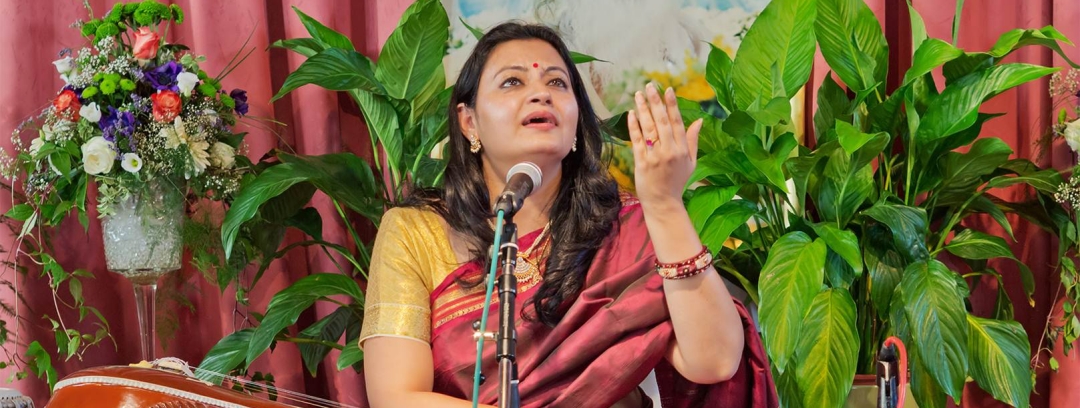
"I wanted to show how these old masters would have seen the world..."
As a child you were trained by your father, Pandit Laxman Krishnarao Pandit. How did he teach you? What methods are used in your family?
I can’t say when it became formal training exactly. But he became a stricter guru as I got older and more serious about the music. He always had students in the house as well, so we could hear how their lessons were progressing. We were all in awe of him, and a little scared too.
His basic method was very interesting. He would hold a tanpura in one hand, play the tabla with the other, and sing to teach us the ragas - all at once! Sometimes he would ask me to take over the tanpura. I’m small, and after a while my legs would start to go, and my hands would ache from holding it up. But it was always interesting to be so close to the sounds.
He didn’t spend hours and hours teaching us. A good guru shows you the technique, and then you have your riyaz [immersive practice] to do something with it. We would practice what he gave us in our bedrooms, and he would sometimes open the door and come in to correct us! All too often today, teachers get the student to practice something a hundred times in front of them, but then just go away afterwards, so they cannot guide the development.
What musical material did you cover first?
The fundamental ragas were taught from the start, always through compositions. Many, many compositions! We didn’t start with sargams [patterns sung using note names - Sa, Re, Ga, etc]. If you feel the shape of the composition properly then you will understand how to turn it into sargam later on. My father was a very good guru, so from a young age I could notate any song like this if I wished to.
The first tala [rhythm cycle] we learned was not ektal [12 beats] - it was tilwada [16 beats]. Sometimes my mother used to play the theka [basic pattern] and I would sing. I still think it is more difficult to master than ektal.
How does your training compare to that of your ancestors from centuries past?
The training methodology has stayed very similar. We have kept certain methods constant in our family. For example we don’t just copy our gurus. My grandfather never allowed any student to copy him. When it came to performance, he never allowed it to be exactly the same. Instead he said we should all find our own gayaki [style].
There is this whole myth of copying. If you have taken good talim [training] then the fundamentals of the style come automatically, and you can develop your own gayaki from them. These fundamentals do not change, but the musician can combine them in new ways.
And it should be always be according to the temperament and malleability of their voice. Every voice is different, and intelligent artists make the best of their own qualities.
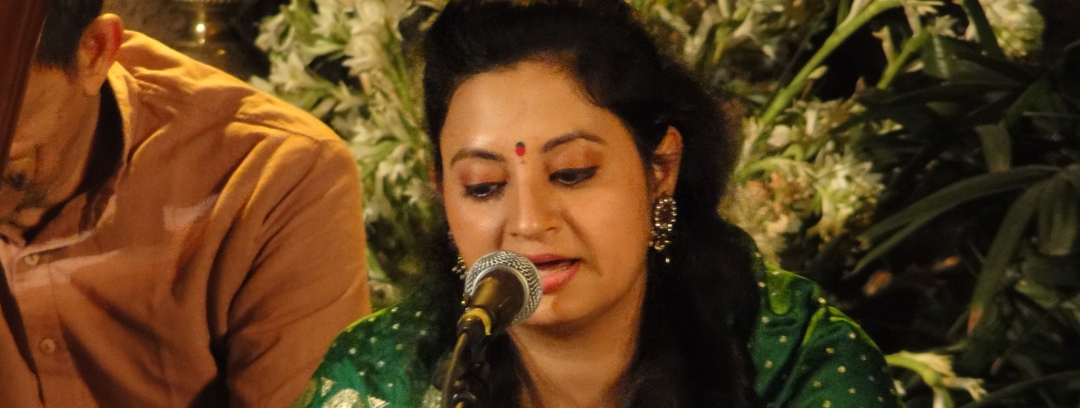
"Always through compositions. Many, many compositions..." Photo: Os Rupias
You describe ragas as “living with their own souls”. How do you go about getting to know them beyond the theoretical level? How do you maintain the relationships over time?
How did I get to know them on levels beyond the theoretical? I would say I never really learned ragas in a theoretical way. Our family teaches through compositions. Learning a raga goes on for many years, as there are always more phrases.
I was never even taught which were the vadi and samvadi [king and queen notes]. Because these things shouldn’t really be technical knowledge - they have to reflect in your melodies. Each composition has different aspects of the raga unfolding within it - we learn like this, in a very holistic manner.
I guess theory is mainly about giving structure to what you can already hear. And a child doesn’t need to write down the grammatical rules of English in order to speak the language fluently - if you learn and practice enough phrases then the structural understandings will become clear.
Yes, it is like this. Actually I did study theory later on, for my PhD. But it came so naturally - I didn’t have to go through the textbooks. I would know for each raga, whether Bageshri, Deshkar, Hameer, or some other. I already felt what the movements were, through having properly learned the compositions.
You are steeped in the sounds of your ancestors, but draw on other influences too. How do you balance innovation with tradition? Do you feel the weight of your lineage?
I don’t feel any weight. I came into the music without it, as my brother was always expected to be the next leading artist of the family. Personal expression is the most important thing for a musician - any artist must be themselves.
To ask someone why they do not copy their family style totally is like saying, “Why isn’t your nose more like your father’s?” - how ridiculous that would be! You are you, I am me - we come out in the ways we do. And so does the music. Of course the same DNA will be there, but each person will be different.
How do you choose which ragas to perform?
I have no fixed answer to this. I don’t change my style for any audience, but will be sensitive when it comes to the choice of raga. It depends on my memories of the city, or the feel of the concert hall and audience. Occasionally I don’t find any inspiration beforehand - I have to trust that it will come when I arrive on the stage, which can be quite scary! I really have to look within myself in those moments, but it always comes in time.
Pandits of Gwalior covers religious history too, discussing an era when it was much harder for Hindus to practice music. But the Pandit brothers - your ancestors - managed to learn from top-class Ustads. How did this come about?
This was the time of the Islamic conquest, so the Ustads enjoyed the patronage of the royal courts. They would only have to teach who they really wanted to. And there was no other way to really learn Indian classical except this. Gwalior was a place for pilgrimage as well as music, so people would come to the residence of the Ustads under the guise of looking after horses, bringing gifts, doing housekeeping - any way to gain entry and overhear the masters.
It was purely by the dedication of the Pandit brothers that the Ustads agreed to teach them. The gurukul [master-disciple] system they trained in is about a sense of surrender. The [Muslim] Ustads would not have taught Hindus otherwise. They saw that they had talent, but it was the devotion and total sense of living that convinced them to take them on. It was only through surrendering that my family were able to access this art. And now it has reached six generations.
Hindustani classical musicians of today increasingly seem to draw inspiration from outside India - Pandit Debashish Bhattacharya told me how he studied Hawaiian slide guitar music in his youth, and Ustad Shahid Parvez recounted a fondness for Mozart in his interview. What non-Indian music are you drawn to?
I’ve always been interested in other music, and have listened to many different cultures. I particularly like jazz singers, like Billie Holiday and Ella Fitzgerald - the different tones, how they throw their voices, all the rest. Once I spent three months in Paris working with jazz musicians. It was very interesting to collaborate!
Some of the musicians I’ve been speaking to talk about ‘unanswered questions’ regarding their own musical approach. Do you feel any such questions?
You know, one of the most interesting things I think about is why the same raga can have such a different effect in different places. Sometimes you liked your performance and others weren’t appreciating it, or perhaps the audience loved it and you really didn't. I haven’t really answered this yet, but it’s always very interesting to learn more.
What does musical satisfaction mean to you?
When it comes to satisfaction there are two different levels. You can be happy with yourself as an artist, but at the same time can never become satisfied with the details of the music itself. I’m still a big self-critic, and my mother is also very discerning. The day you’re satisfied with your capabilities - that you feel you’ve ‘done it’ - then you will see what you have missed! So you must be satisfied with the knowledge that there is always something more to learn.
Satisfaction is about more than just your own music too - I get a lot of satisfaction when hearing my students. And it would also be satisfying to go on practicing for many years. Such a sense of gratification, of being thankful your body can still do it. It’s amazing to see tabla players performing until they are 80 nowadays! It would be wonderful if I could go on singing for the rest of my life.
• George Howlett is a London-based musician and writer, specialising in jazz, rhythm, Indian classical, and global improvised music.
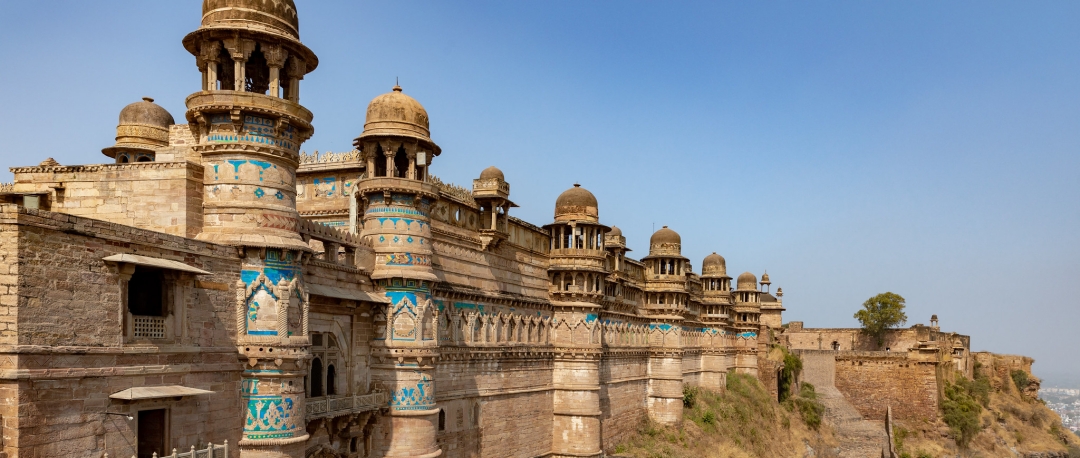
Gwalior Fort, site of Raja Man Singh Tomar's 16th-century music school
Darbar believes in the power of Indian classical music to stir, thrill, and inspire. Explore our YouTube channel, or subscribe to the Darbar Concert Hall to watch extended festival performances, talk and documentaries in pristine HD and UHD quality.
Behind the scenes with Darbar's sound engineer Christoph Bracher. How does Darbar successfully reimagine and...
Read More 
The Patiala khayal superstar discusses her unique cultural heritage, the power of physical expression, and how to...
Read More 
The Mridangam maestro discusses cross-cultural teaching, the rhythms of the ocean, and the future of Carnatic...
Read More 
The beginner's guide to Indian classical music. Whether you’re completely new to raga music or just need a refresher, we’ve put together this brief overview of all things raga music to help you feel at ease when visiting one of our concerts or watch our videos on our YouTube or our Darbar Concert Hall.

Keep up to date with the latest news, events, music and musings across our social channels
For hundreds more clips and shorts, vist our YT page here 
Be the first to hear before events go on sale. Get the latest news and articles from Darbar